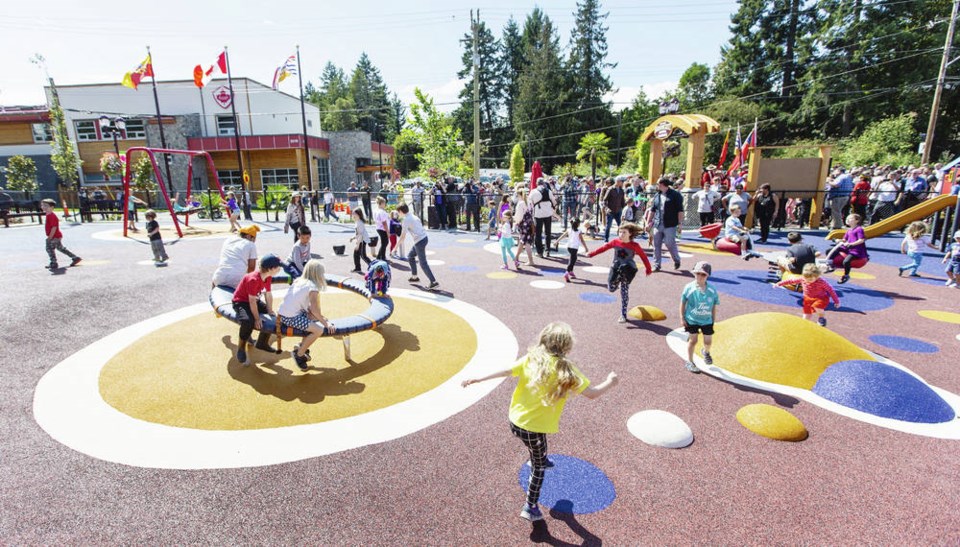“The well-being of children is the ultimate indicator of a healthy habitat, a democratic society and of good governance.” So stated a resolution passed at the second UN Conference on Human Settlements in 1996, leading UNICEF, the UN Children’s Fund, to create its Child Friendly Cities Initiative that same year. It is seen as a vehicle to implement the UN Convention on the Rights of the Child at the local level.
To become a Child Friendly City, cities should implement a nine-point framework that includes having “strategies for children, regular reports on the state of the city’s children, independent advocates for children, opportunities to listen to children’s views” and other governance measures. The aim is “to consider the best interests of children in formulating and co-ordinating policies, services and other government action.”
UNICEF reports there are almost 1,000 Child Friendly Cities worldwide. In Canada, there are 49 in Quebec as part of an NGO-led provincial initiative, but few seem to be in B.C.
But my specific interest here, following on from my two latest columns, is the implications of a child-friendly approach for the design of housing and other aspects of the built environment, especially here in B.C.
The Society for Children and Youth of B.C. (SCY) began its child- and youth- friendly communities project in 1998. It has a toolkit for interested organizations and has developed pilot projects in New Westminster and Vancouver. Abbotsford and Surrey, among others, have developed a Child and Youth Friendly Strategy, but I am not aware of anything similar in the Greater Victoria region.
Even before the SCY project, Bob Yates, a local planning consultant, wrote a 1995 report for the society on child-friendly housing. A guide for housing professionals, the report identified a set of nine principles and then discussed how to plan a child-friendly housing project, how to design a child-friendly housing unit, how to build better communities for children and how to manage housing through involving youth.
More recent local examples include a 2009 report prepared for Abbotsford by Cherie Enns, a social planning consultant, and most recently, a comprehensive book — Child in the City — by Sidney-based planning and urban design consultant Kristin Agnello.
Based on a series of consultations in Abbotsford, Enns reported that “what is most needed for future housing development has been the need for mixed-use neighbourhood design with affordable rental and owned housing.” Her report includes an extensive checklist for various aspects of child-friendly neighbourhood design, covering issues such as parks and other amenities, housing, transportation, schools and security.
With respect to housing, she suggests child-friendly forms include courtyard housing — which “creates a specific public space that is shared by the residents” — and co-housing, while neighbourhoods should have discernible social centres and an elementary school within 1.6 kilometres.
Available free through her Plassurban website, Agnello’s easy-to-read and well-illustrated book takes the view that “an environment that addresses the needs of children … is one that is friendlier and more accessible to people of all ages and abilities.” So make it work for children and we all gain.
She provides a comprehensive overview of policy, regulatory and financial measures, as well as nine design guidelines and 35 design objectives for both housing and neighbourhoods, all summarized in two simple charts. As well, she emphasizes the importance of engaging children in participatory planning, writing: “To plan our cities in a way that enables children to be co-authors of their own communities is key to a sustainable — and inclusive — future.”
But if, indeed, “the well-being of children is the ultimate indicator of a healthy habitat, a democratic society and of good governance,” surely that must include not only today’s children, but the well-being of future generations of children. That is the deeper meaning of child-friendly communities.
In this age of climate change and other global ecological crises, the CRD and all our local municipalities must dedicate themselves to the well-being of future generations by reducing our overall ecological impacts, taking only our fair share of the Earth’s biocapacity and resources. The region’s municipalities need to embrace both UNICEF’s Child Friendly Cities Initiative and develop plans to become “One Planet” communities. Our children require it of us.
Dr. Trevor Hancock is a retired professor and senior scholar at the University of Victoria’s School of Public Health and Social Policy.



